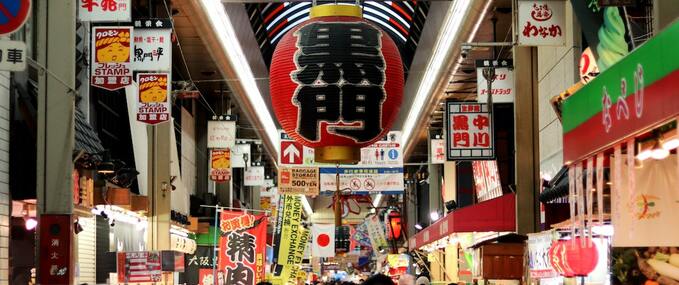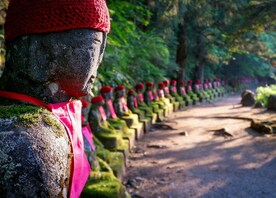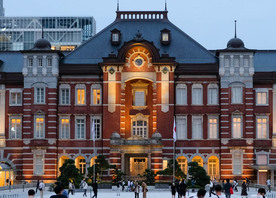Love shopping? You’ll love Japan! Discover Japan’s best shopping streets, from traditional local covered ‘shotengai’ to dazzling high-end boutiques.
Table of contents:
Intro to shopping streets in Japan
Japan has it all when it comes to shopping. From traditional covered markets filled with local shops, to quirky back streets and alleyways that have become world-renowned for their trend-setting boutiques, to niche districts for electronics and manga, all the way through to the highest of high-end shopping for the big spenders. Shotengai means ‘shopping street’ in Japanese and is typically used to refer to a traditional covered street lined with local shops. These streets are often close to train stations and are part of a tradition dating back hundreds of years. With more than 15,000 shotengai across Japan, you’ll be spoilt for choice. The term ‘shotengai’ also more broadly refers to any kind of shopping street, and Japan has these in abundance, from hip districts to bustling malls. If you love shopping, you’ll love Japan. Let’s take a look at the best Japanese shopping streets, how to get there by train with your JR Pass, and things to see and do. Get ready to shop til you drop! 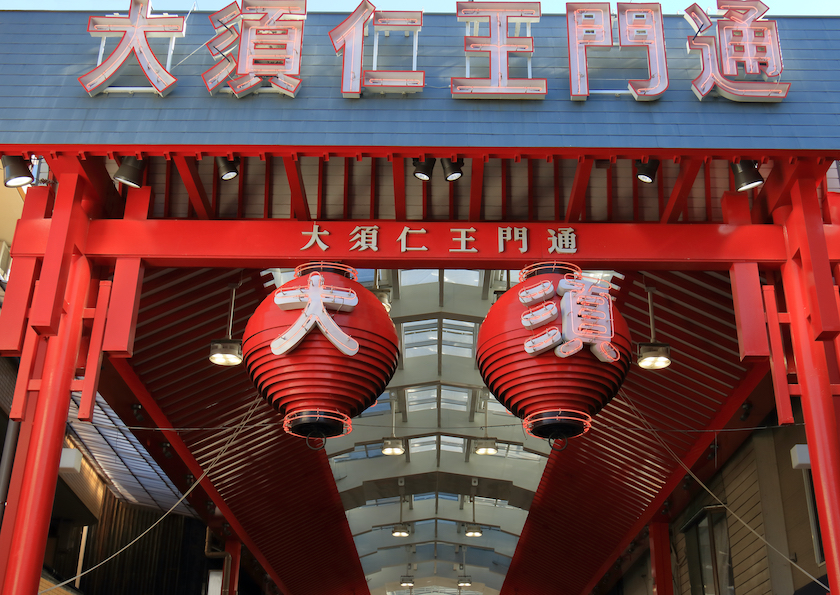
A Brief History of Shotengai
Shotengai are understood to date back to the medieval markets of 16th century Japan. Over time, these ‘rakuichi-rakuza’, or ‘free markets’, evolved into long, sometimes covered streets, lined with small, independent retailers, with an arch at either end. Shotengai were about much more than commerce, however, and served an important role in their community. Many shops were traditionally family run, and operated by the community they serve. They were the antithesis of faceless supermarkets and corporate shopping malls. A visit to the local shotengai was a much more personal experience as well as a meeting place and vital community hub. Shops found on a typical shotengai include panya (bakeries), ochaya (tea shops), kissaten (traditional cafes), sakeya (sake shops), washokudo (restaurants), tokoya (barbershops), nikuya (butchers), sengyoden (fishmongers), yaoya (greengrocers), and more. Although traditional shotengai have been in decline since the Second World War and the rapid Western-influenced commercialisation that followed, it is estimated that there are still 15,000 across Japan. They can vary massively, from market-like streets entirely populated by small local shops and with red Torii gates at the entrance, to larger covered arcades with bigger chain stores. Some older, traditional shotengai lead to shrines and temples and are open-air, while others are located underground and connect to train and subway stations. Shotengai are a great way to step back in time and experience a slice of traditional Japanese culture. 
If you’re planning a city-hopping tour of Japan, visiting shotengai in different neighbourhoods will give you a real insight into the local community that you could never get from a department store or supermarket. You’ll also find fresh, local produce - high quality tea, tofu, bread, confectionary, community services, and much more. Naturally, the best way to travel from city to city is on Japan’s excellent domestic rail network using a Japan Rail Pass - one ticket for unlimited travel. Japan’s trains are fast, clean, and efficient and a rail pass is indispensable if you’re hoping to see as much of the country as possible.
Alongside formal shotengai - covered streets of small businesses with arches at either end - Japan also has numerous shopping streets and districts that are well worth a visit while you’re in the country, especially if you love shopping. In our list of Japan’s best shopping streets we’ll explore both traditional shotengai and other contemporary shopping districts you won’t want to miss.
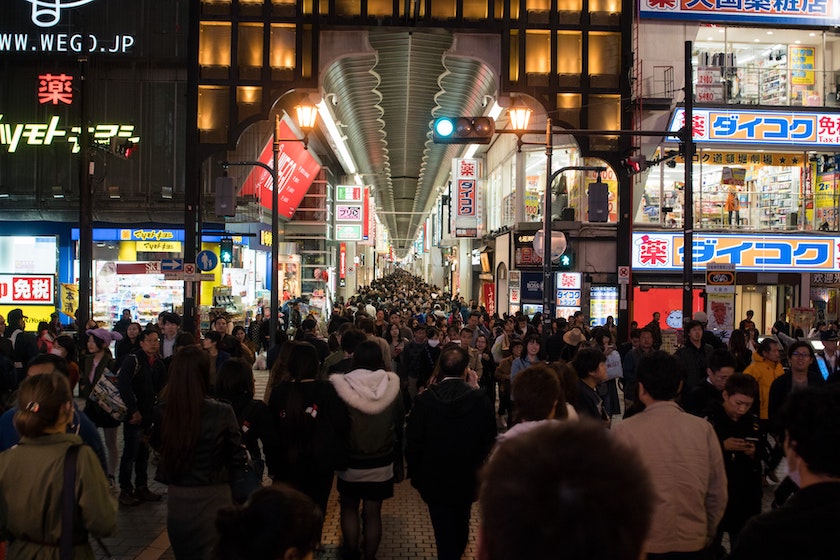
Best Japanese Shopping Streets
You’ll find incredible shopping right across Japan. Whether you’re visiting one of the big cities like Tokyo or Osaka, or travelling along the more remote coastline or countryside, you’ll find shotengai throughout the country. From traditional shotengai to modern-day retailers, we’ve put together a list of the very best shopping streets in Japan.
- Shiomachi Shopping Street, Setoda, Ikuchi-Jima
This picturesque 600m shopping street is officially called the Setoda-cho Honmachi Motomachi shopping street and really does feel like stepping back in time. With 53 shops - some of which have been trading for more than 50 years - you’ll be able to experience a slower pace of life and a taste of old Japan on a street that looks straight out of the Edo Period. Look out for the street’s famous croquette shops and their roast chicken. Shiomachi street runs from Kosan-ji Temple to Setoda Port. Setoda is located on the west-coast of Ikuchi-jima Island, part of the famous Shimanami Kaido cycle path which includes eight bridges and six islands across the Seto Inland Sea. If you’re a keen cyclist this route is one of the best in the world and Shiomachi Shopping Street makes a great stopping off point on your journey. For more on the Shimanami Kaido read our guide to Japan’s Best Cycle Routes.
- Togoshi Ginza, Tokyo
Tokyo has many classic shotengai such as this one in the Togoshi District of Shinagawa. Togoshi Ginza is a Showa era shotengai that has enjoyed a resurgence in popularity thanks to its old-school style and wealth of independent shops and eateries. From traditional okonomiyaki (Japanese savoury pancakes) to thrift stores selling vintage kimonos and traditional zori (slippers) and geta (sandals), Togoshi Ginza really is a treasure trove for lovers of traditional goods.
Interestingly, Ginza is also known as one of the locations for high-end shopping in the city. Read our Guide to Ginza: the place for upmarket shopping in Toky
- Shintencho, Fukuoka
Dating back more than 70 years, Shintencho in Tenjin, Fukuoka, is one of Japan’s oldest shotengai. A true throwback to traditional community shopping in Japan, there are more than 100 shops selling food and groceries, clothes, stationary, gifts, and more. Shintencho also features the tallest marionette clock in Japan in the centre of the arcade, and this is often used to host music acts and public events, further adding to the special atmosphere. You’ll find Shintencho a short walk from Tenjin Station in Fukuoka.
- Takamatsu shotengai
Believed to be the longest covered shotengai in Japan at 2.7km long, you’ll find a mix of smaller retailers and high-end brands. There’s also a side street called Lion Dori that’s dedicated to food and serves the local speciality, Sanuki Udon. This extra-long shotengai stretches from Takamatsu castle to Ritsurin Koen (a beautiful Japanese garden dating back to the Edo Period) and is accessible from JR Takamatsu Station.
- Shinsaibashi, Osaka
Shinsaibashi is the city’s biggest shopping area, with hundreds of big name stores. It’s been a massive part of Osaka’s culture and history for 400 years and features every big name brand you could wish for - all under one 600-metre long covered street. It is the place to go if you want to shop until you drop. When it comes to shopping, make sure you also try Southroad Sennichimae - known as Ura-Namba or Back Namba - which is a smaller covered shopping arcade and strip of restaurants near Namba Grand Kagetsu. Finally, Sennichimae Kitchenware Street is a unique area, found close to Namba Station, that sells exclusively (you guessed it) kitchenware, including the finest Japanese kitchen knives. You can find out more about this district in our Guide to Namba. Osaka has several other shotengai as well, including Tenjinbashisuji, and to a certain extent also the famous Dotonbori area (although it’s arguably more famous for its food, drink and nightlife). Look out for Kuromon Market for the best fresh produce and street food too. You can also find a huge range of electronics and gadget shops in the famous Denden district. Find out more in What To Do in Denden Town.
- Ekimae Dori, Sapporo
A unique underground shotengai beneath Sapporo’s main city street, this 520m stretch of shops selling speciality products and goods also connects to Odori Park. As well as retail, it’s also a place for sharing community information, displaying artworks and more. It may look much more futuristic than a traditional shotengai, but this 21st Century underground equivalent is fulfilling many of the same community needs as its older predecessors. Ekimae Dori is also known as Chi-Ka-Ho. Sapporo is the capital of Hokkaido - Japan’s northernmost island - which has its own distinct character from the rest of Japan as well as a colder and snowier climate.
- Nishiki, Kyoto
This narrow market in central Kyoto is home to more than 100 small shops and stands selling all manner of food and kitchen items, from delicious produce to knives and ceramics. The shops of Nishiki Market are a great spot for souvenir hunts. From kitchenware to yummy things to bring home, there’s a lot to explore. It’s easy to access Nishiki Market due to its location in central Kyoto. The area can be reached on foot within minutes from anywhere in Kawaramachi, Sanjou street or Shijou street. From Kyoto station the fastest option is to take the Kyoto subway to Sanjou station and walk from there. Read our guide to Nishiki Market: The Kitchen of Kyoto, for much more. While in Kyoto - the cultural heart of Japan - be sure to check out Sannenzaka shopping street in Higashiyama district near the UNESCO World Heritage temple, Kiyomizu-dera (pure water temple). It’s a well-preserved shopping area that’s like stepping back in time to feudal Japan.
- Takeshita Dori, Tokyo
The iconic birthplace of quirky Japanese street fashion, Takeshita Dori is a 400 metre long street of shops, cafes, fast food restaurants, and fashion boutiques that is hugely popular with Japanese teenagers seven days a week, and particularly on weekends. This is the street where Japan’s youth culture which created Harajuku style and fashion began gathering in the late 1970s and 1980s,, and the street has to be the No.1 destination for anyone interested in experiencing this for themselves. There are many interesting side streets leading off Takeshita Dori that are well worth exploring too for their many shops and restaurants. It’s often just off the beaten path where you’ll find the most unusual little places. Alongside Takeshita Dori itself, Harajuku is famous for shopping thanks to shops like LaForet Harajuku, Tokyu Plaza, Daiso Harajuku, Oriental Bazaar and Kiddy Land. Takeshita Dori in Harajuku can easily be reached using the Yamanote rail line, which is fully covered by the Japan Rail Pass. When you come out of Harajuku station simply cross the street and turn left for Takeshita Dori. For more on this famous shopping street read our Guide to Harajuku.
- Omotesando, Tokyo
Although not a traditional shotengai and the polar opposite in terms of its style, the high-end and beautiful Omotesando is still a highly recommended shopping district. Omotesando is a tree-lined avenue located between Shibuya and Harajuku, and best known for luxury goods stores and high quality products. It is considered one of the most beautiful streets in Tokyo, because of stunning architectural buildings on both sides of the avenue. The area is also home to Omotesando Hills, a large and luxurious shopping complex with about 130 shops. Unlike larger brand shops close by, shops in Omotesando Hills are smaller and sell a wider range of brands and items. The complex is also special in that it has 12 stories, but six of them are built below ground. You can find out much more about this high-end street, and how to get there, in our comprehensive guide to Omotesando: Tokyo’s Fifth Avenue.
- Nakano Broadway, Tokyo
Nakano Broadway is another shopping complex that’s not technically a shotengai, but it shares many similarities with those famous shopping streets. Built in the 1960s as a covered shopping area, it was meant to be a vision of the future, but after being overshadowed by newer Western style malls it became a haven for retro and otaku culture. It’s now world-famous as the place to go for Manga and Anime lovers, with a huge array of shops in a charming retro environment that hasn’t changed much since the 1960s. As well as the four floors of the complex itself, there’s Nakano Sunmall, which is more like a traditional shotengai. This 225-metre-long street is covered and features many smaller shops specialising in a wide variety of items including apparel, jewellery, (video-)games, books, street food and others. Branching off from Nakano Sunmall are smaller streets with Izakayas (traditional drinking and entertainment venues). Be sure to explore the outer area too as there are many good places to go for lunch or dinner. For more, read our Guide to Nakano Broadway.
Bonus tips
- Local shops mean local food and Japan is a paradise if you love a good meal. Find out more in our Beginners Guide to Japanese Food.
- Need a break from shopping? Japan’s cities are also famous for their green spaces, which are a great place to relax and unwind after a shopping frenzy. Read our guide to Tokyo’s Yoyogi Park for more.
- If you’re planning to visit shotengai in big cities like Tokyo or Osaka, you’ll want to invest in a prepaid travel card such as an ICOCA, PASMO or Suica card for Tokyo’s public transport, as well as a JRailPass for getting around the rest of Japan. Check out our Top 30 Tips for Using Japan’s Metros for advice and guidance on using the country’s subway network.
- First time in Japan? Consider our Meet and Greet Service - it’s like having a personal assistant and local travel expert ready to meet you on arrival.
- Stay connected with Pocket Wifi - it’s the best way to access the internet from multiple devices while travelling in Japan and helps avoid unexpected data charges.Running low on money after all that shopping? Read our guide to 10 Amazing Things You Can Do In Japan For Free for some brilliant money-saving tips.
